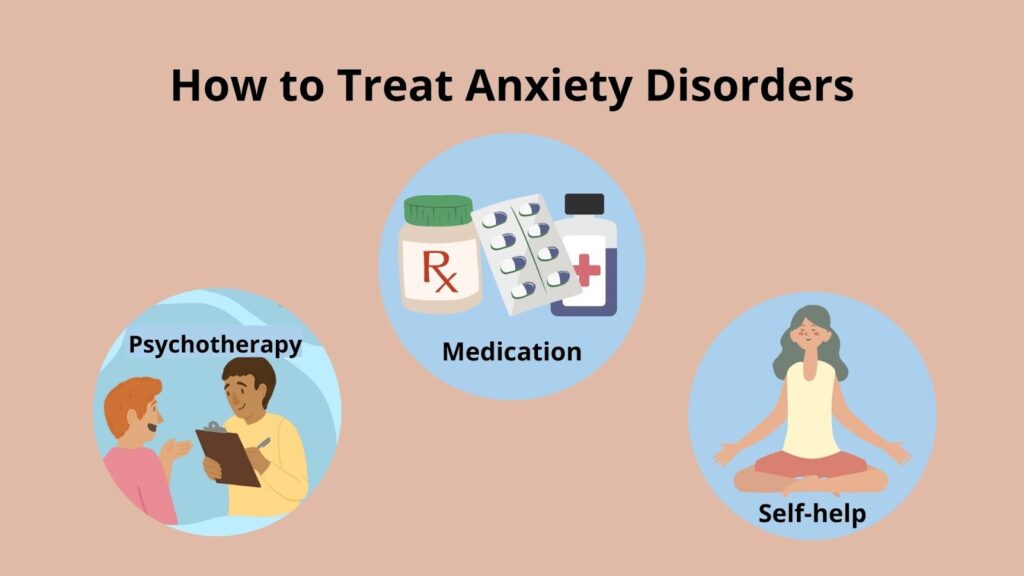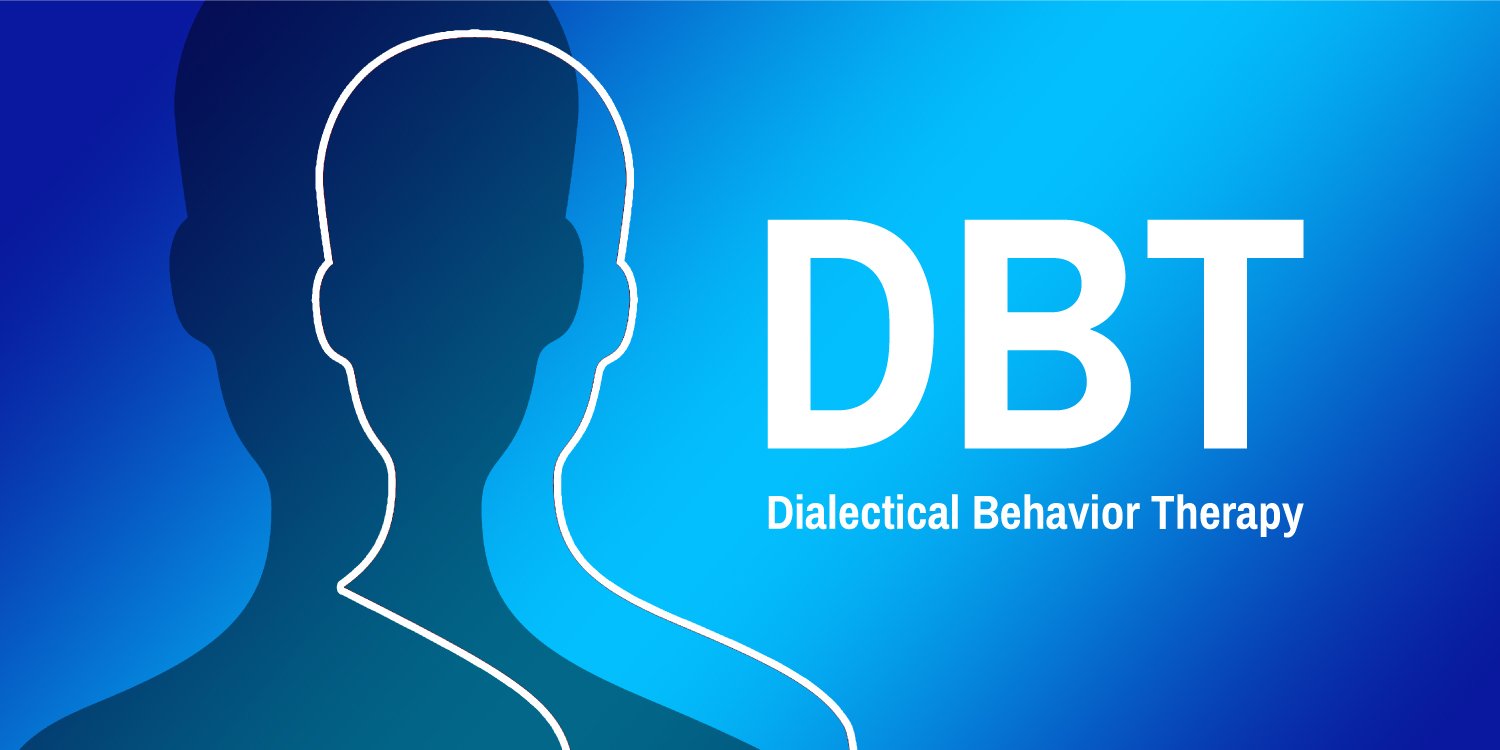Anxiety disorders are the most common mental illness in the United States. They affect more than 40 million adults or 18% of the population over age 18. Anxiety is also one of the most costly conditions to treat. The costs for outpatient care exceed $42 billion annually. If you struggle with anxiety, it can be hard to know where to turn for help or relief. Luckily, there are many treatments available that are effective in treating anxiety disorders and improving quality of life! This article will explore some different kinds of therapies used by people who suffer from anxiety as well as their efficacy rates. Treatment of anxiety is often more manageable when the right type of therapy treats your unique symptoms and needs.
Treating Anxiety With Therapy
There are illnesses that make you feel fear and anxiety. You can control these feelings. This will make you feel better. There are many effective treatments available that can help you live a healthy, happy life. Additionally, there are several different types of therapies that help in treating anxiety disorders including cognitive-behavioral therapy (CBT), mindfulness-based stress reduction (MBSR), exposure therapy, and acceptance commitment therapy (ACT).
Cognitive Behavioral Therapy
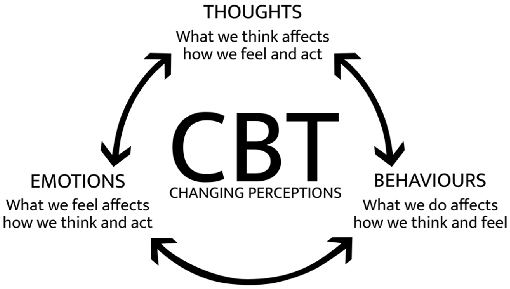
According to the National Institute of Mental Health, CBT is one of the most effective treatments for anxiety disorders. It’s an active, directive type of psychotherapy that helps sufferers change negative or unhelpful ways of thinking. However, with this form of therapy, you will learn how to identify and replace negative thoughts with more realistic or helpful ones. You will learn how to deal with things that make you feel nervous. You will also find the root of your anxieties so that you can manage them better.
Benefits of Cognitive Behavioral Therapy
Cognitive-behavioral therapy is one of the most prevalent therapies for treating anxiety disorders. It’s effective in reducing or completely eliminating symptoms including:
- Feelings of powerlessness, hopelessness, and/or isolation
- Avoidance behaviors that keep you from living life to its fullest potential
- Anxiety-related physical ailments like headaches, stomachaches,
These are just some examples of how CBT can help sufferers overcome their anxieties by changing unhelpful patterns of thinking. Additionally, it is very beneficial for improving sleep quality and developing healthy ways to manage stress.
Furthermore, there are several different types of cognitive behavior therapies available each with specific techniques. The psychologists tailor them to treat the unique symptoms and needs of each sufferer.
Drawbacks of Cognitive Behavioral Therapy
Cognitive-behavioral therapy is not for everyone. Some people may find it too directive or controlling. Others may have a difficult time with the homework that one must complete in between sessions to keep making progress.
Acceptance Commitment Therapy
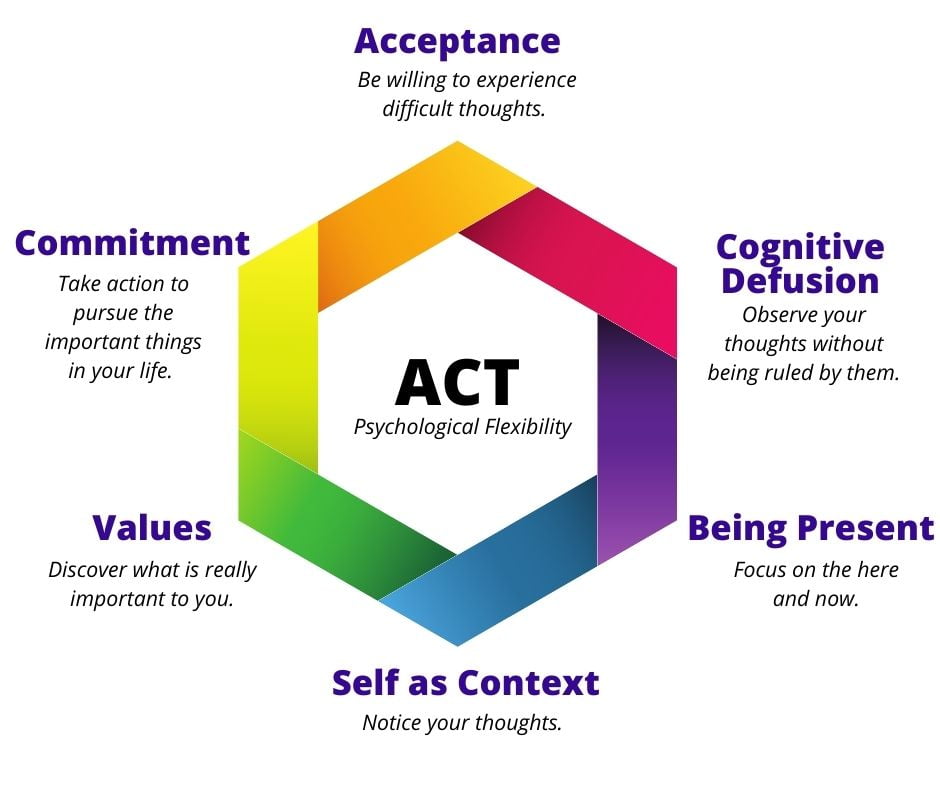
Another type of therapy that is useful in treating anxiety disorders is acceptance commitment therapy or ACT. This kind of treatment helps people who feel like they can’t control themselves, and that no one cares about them. This is a book that teaches you how to live with anxiety. It will teach you about the negative effects of avoiding things and how this just makes it worse. It will also teach you ways to cope, like deep breathing.
Benefits of Acceptance Commitment Therapy
- The ACT is good at reducing symptoms of anxiety. It helps with generalized anxiety disorder, panic disorder, post-traumatic stress disorder, and social anxiety.
- It helps decrease depression symptoms that are often co-occurring with an anxiety disorder.
Drawbacks of Acceptance Commitment Therapy
Some people may find it too difficult to believe their anxious thoughts when they do not necessarily feel them at the moment. Some therapists use exposure therapy when you know how to cope skills. You can learn it before you experience a panic attack or phobia-related situation. Some people have trouble committing to change because they think things will not get better right away. But if they try the techniques in therapy, then things might change for them.
Mindfulness-Based Cognitive Behavioral Therapy (MBCBT)
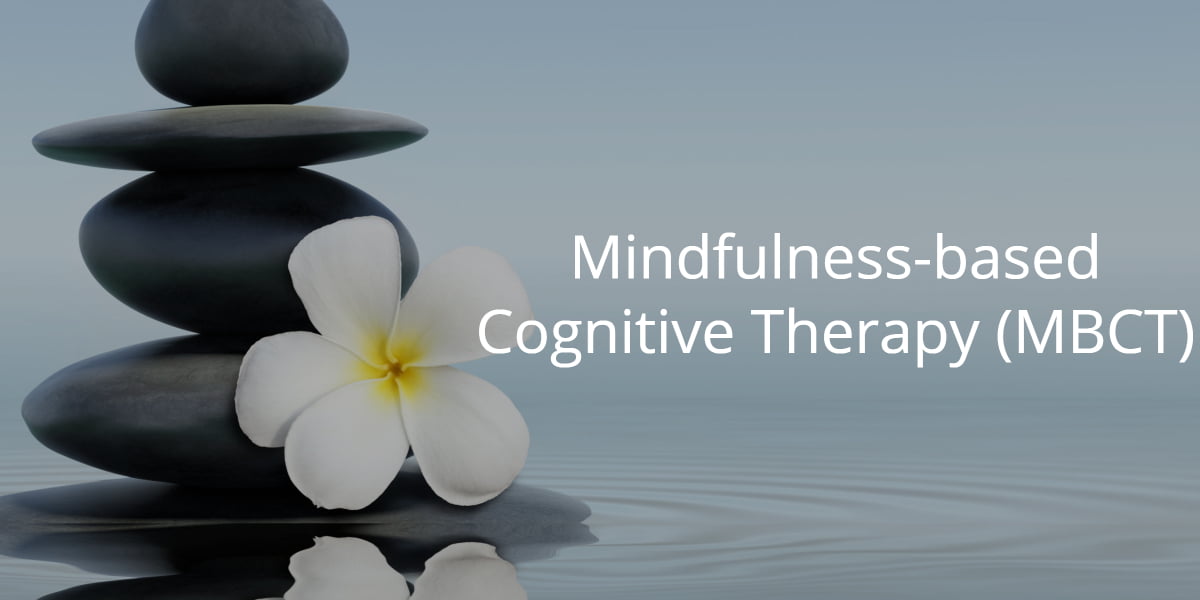
Another therapy is mindfulness-based cognitive behavioral therapy or MBCB which works together with acceptance commitment therapy. It aims to treat anxiety disorders like social anxiety disorder, panic disorder, and generalized anxiety disorder (GAD). This treatment helps you learn how to think about the present moment without judging it. This way, if you have an anxious thought, you will know that it is just a thought and not reality. People who are able to do this form of CBT are able to recognize their symptoms but they know not to let them control them. They don’t avoid anything or push people away because they feel too overwhelmed or embarrassed in front of others.
Benefits of Mindfulness-Based Cognitive Behavioral Therapy (MBCBT)
A big benefit of MBCBT is that it can be used with exposure therapy. Exposure therapy has been shown to be the best way to treat many different problems, including phobias, panic disorders, and post-traumatic stress disorder (PTSD). This type of treatment helps people with depression or substance abuse issues learn how to cope better. They are able to manage their emotions better.
Drawbacks of Mindfulness-Based Cognitive Behavioral Therapy (MBCBT)
Some people have a hard time paying attention at first. This is because all their thoughts seem negative when they are experiencing symptoms like depersonalization or derealization. Other people have reported this kind of CBT being too passive. They also had difficulty getting the motivation to practice self-care on a daily basis.
Mindfulness-Based Stress Reduction (MBSR)
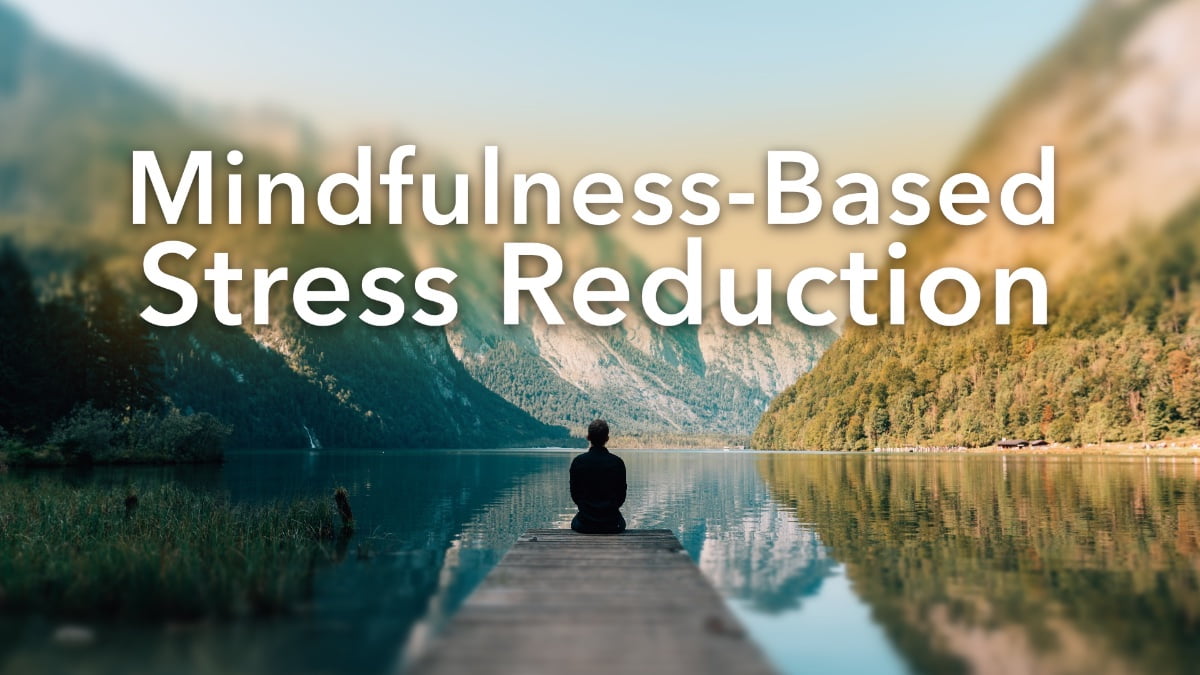
Another form of therapy is mindfulness-based stress reduction (MBSR). It was developed by Jon Kabat Zinn. He used meditations to help patients learn how to pay attention without judgment and reduce anxiety symptoms. It has been found that MBSR can be very effective for treating many different medical conditions like stomach problems, pain, and even cancer.
Benefits of Mindfulness-Based Stress Reduction (MBSR)
Some people who do MBSR learn how to pay attention without judgment. They also practice deep breathing which can help reduce symptoms like muscle tension or rapid heartbeat. This is why it may be effective at reducing panic attacks. Therapy combined with exposure therapy is sometimes used by therapists. Therapists will teach you how to tolerate feeling uncomfortable emotions and physical sensations. This can help you better manage your stress levels over time, too, if you practice these skills after the completion of the course.
Drawbacks of mindfulness-based stress reduction (MBSR)
Some people have reported feeling too distracted during meditations while others struggle initially learning how to pay attention without judgment. Some people do not like the MBSR because they think it is too passive and does not get rid of their anxiety. They say that it might make the symptoms worse if you are still trying to avoid situations or push people away.
Dialectical Behavioral Therapy (DBT)
Another form is dialectical behavioral therapy (DBT). It was developed by Marsha Linehan. It uses mindfulness skills as well as cognitive-behavioral strategies like exposure therapy and social skills training for treating a variety of mental health conditions. These conditions include mood, eating, personality, substance abuse disorders, etc. It is a type of therapy that will teach you how to handle your emotions better. You can do this by learning different coping strategies.
Benefits of Dialectical Behavioral Therapy (DBT)
This type of therapy helps you feel less overwhelmed when you are thinking much. It teaches how to be happy when you are feeling sad. Many therapists have found that Cognitive Behavioral Therapy with Exposure Therapy is a good way to help people who have panic attacks or other symptoms.
Drawbacks of Dialectical Behavioral Therapy (DBT)
Some people have trouble applying skills from therapy to their daily life. They can find it hard to focus or they might not be a good match for the person’s personality. DBT is too passive. It can be hard to do self-care every day. This can make anxiety feel intense, but people with DBT may not have access to therapy or support from loved ones.
Exposure Therapy
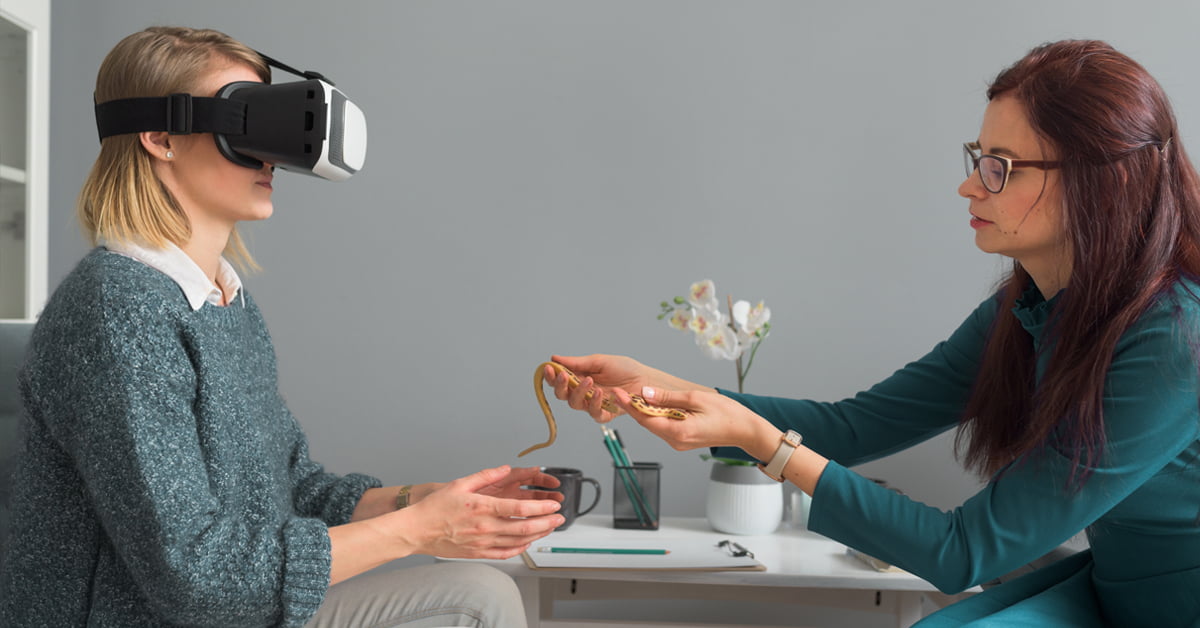
You can get more information on a type of therapy called exposure therapy. This is a way to treat many mental health conditions, including phobias, PTSD, and OCD. You can use this type of therapy. CBT is a therapy for anxiety that can help you feel better. It teaches you how to feel less scared and avoid things that make you nervous. The more CBT, the less scared and nervous you’ll be!
Benefits of Exposure Therapy
Exposure therapy is a good way to get better. The person can learn how to control their body when they do something that they are scared of. They will be able to focus on other things or take deep breaths before doing something that scares them. It also helps patients feel more comfortable in social situations. This is why it can be useful for treating mental health problems.
Drawbacks of Exposure Therapy
Exposure therapy is a type of treatment that can help people overcome their fears. This treatment helps them feel less afraid. But some people don’t like this because they can’t control the level of intensity and it might be difficult for them to do physical activities. Other people who do CBT feel that it is discouraging or demotivating when they don’t get better quickly. It might take more patience to get better. It is important to think about the limitations of exposure therapy. This includes what type of support you need so you can be successful with this type of treatment.
Complementary Therapies For Anxiety Disorders
You can get help for your mental health condition in other ways. One way is to use therapies that are not like what doctors do. These often involve teaching someone to relax before doing something so their symptoms will go away. It has helped people participate in things they would not be able to do if they were too sick or in pain all the time.
Exercise
It is good to do other things that can help you feel better. Exercise is one such thing. Like relaxing before doing something. This way, it will be easier for you to get over the therapies.
Relaxation Techniques
The easiest way to stop anxiety in its tracks is by practicing a relaxation technique. It’s important that you know what works best for you when it comes to calming your mind and body, whether it be meditation or yoga. You can do things like tensing up your body before relaxing it again, taking deep breaths, getting enough sleep so you wake up feeling rested, and other things to reduce symptoms.
Biofeedback
Biofeedback is an effective way to learn how to control your own body without taking medication or consulting a therapist. Anxiety disorders can be hard. It’s hard to know what’s happening inside your body. This is why people use electronic devices that measure things like heart rate and brain waves.
Yoga
Yogais good for your body and mind. When you do yoga, you will feel better. Yoga is good for your heart, too! This type of exercise is important for people who have health problems. It reduces the symptoms of anxiety and provides other benefits like muscle relaxation and pain relief. All in all, yoga is a great way to reduce anxiety symptoms in an effective and relaxing manner.
Meditation
People who have mental health conditions often find that meditation helps calm their minds. There is no one else to interrupt them or stop them when they are meditating so they can think about what is happening in their life. It helps with stress and pain. This also helps you think better. It can help people who are afraid of everyday activities. Meditation can help improve your life. Additionally, you might be able to find something you like.
Hypnosis
Hypnosis is a good way to make your mind work again. It can be used for many things like stopping you from thinking about bad thoughts that keep you from enjoying life. There is a way to feel better about yourself by using hypnosis. If someone has anxiety, depression, or another mental health condition, hypnosis will help them with their thoughts about themselves and how they feel by planting new thoughts that will make them feel better. Consequently, the person will not be feeling any discomfort along the way.
Conclusion
Blog post conclusion paragraph: There are a variety of ways to help with anxiety. Cognitive-behavioral therapy, in particular, is one that has been shown to be very effective for treating people who suffer from chronic anxiety and panic disorders. CBT can teach you how your thoughts affect your feelings and behavior so that over time you will have the tools needed to regulate them more easily on your own. If this sounds like it might be helpful or interesting for you, contact us today! With our expert therapists, we offer low-cost cognitive-behavioral therapy sessions in order to provide accessibility for all patients regardless of their income level.
For more information, please contact MantraCare. Anxiety is a common mental health condition characterized by persistent feelings of worry, fear, and apprehension. If you have any queries regarding Online Anxiety Counseling experienced therapists at MantraCare can help: Book a trial Anxiety therapy session
